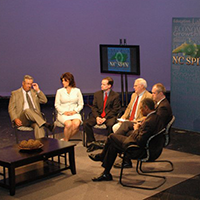Should we worry about fewer youth working?
Published July 21, 2022
For many people, reaching a certain age causes them to think more about their past life. For me, that age was 70. Since attaining that milestone, I find myself thinking more about my seven decades, particularly the early ones.
With all the changes in the labor market in recent years, I’ve been remembering my early days of working. Even before I could legally work for pay, I had chores around my parents’ house and odd jobs. One was picking up nails on construction sites where my father worked. I think I received a penny per nail.
My official entry into the workforce was at age 16 when I took a job at a fast-food restaurant. I worked there a couple of months before finding a better-paying job at a furniture warehouse. I stayed there six years, working half-time during my remaining high-school years and four years in undergraduate college. In summers I worked a full forty-hour week.
Looking back, I think I learned valuable lessons from my introduction to work, including taking orders, being punctual, cooperation, performing undesirable tasks – like cleaning garbage cans - and interacting with strangers. At the time I didn’t understand their importance, but now I truly think my restaurant and warehouse jobs contributed to my success later in my life.
Between 1950 and 1990, the percentage of youths aged 16 to 19 who were working or actively looking for work ranged – with a few exceptions – between 45% and 55%. Or, stated another way, around half of 16-19-year-olds were in the labor force.
But in the twenty-year period from 1990 to 2010, the percentage of working 16-19-year-olds plunged, bottoming out at close to 33%. Since then there’s been little change. Some experts think the 16-19-year-old work rate will drop to closer to 25% by 2030.
What’s happened, and is it good or bad news that young people are working less?
One big factor behind the lower work participation of young people is the growth in the importance of education. As the economy has changed and moved away from using human physical strength to using human cognitive abilities – especially for higher-paying jobs – more young people have seen the need to graduate from high school and then attend college. But to attain the high school grades to first graduate and then be admitted to college, high schoolers may not want to take the time for a part-time job.
Indeed, the motivation to substitute study for work has extended into the summer. In 1980 only 5% of high school students aged 16-19 attended summer school. Recent data show 30% of 16-19-year-olds are now attending summer school. One economist found the increase in summer school attendance accounted for almost all of the decline in summer work by high-schoolers. Then, once in college, student loans can reduce the need for a job to pay tuition and living expenses.
Another factor is competition from other workers, particularly senior citizens and immigrants. The fastest growing demographic group in the country is individuals 65 and over. Some older individuals may decide to work just to keep busy, while others need employment to supplement their Social Security and other pension income. Senior citizens have been especially recruited by restaurants – notably fast-food restaurants – where strenuous physical tasks are limited.
Foreign immigration to the U.S. has surged in recent decades. For immigrants – especially males – with limited English language skills, jobs in construction have become attractive. Immigrants now account for 25% of the construction workforce. In the summer, construction jobs used to offer major employment options for 16-19-year-olds males.Now many of those jobs are taken by others who work full-time year-round.
Interestingly, the decline in working youths has not been limited to our country. Countries with similar economies to the U.S., especially in Europe, have seen downward trends in paid work by young people. The reasons also appear to be the same: the increased focus on more education, and the employment alternatives provided by older individuals and immigrants.
Our country’s declining birth rate will add another element to this story. The relative size of older teenagers (aged 16-19) will decline, and in many states the absolute number of 16-19-year-olds will also shrink. This means there will be even fewer young individuals available for work, suggesting that firms will continue to turn to older workers, immigrant workers, and – increasingly – to technology and automation. We’re already seeing more technology and automation being used in sectors like hospitality and food service.
Yet this still leaves the second question – whether it’s good or bad that fewer youths in their late teens and early 20s are receiving the experiences of, and lessons from, working for pay. I think my early jobs were valuable for me both then and later in life. But every situation and individual are different, and every decision involves both benefits and costs. The best I can conclude is, parents and their children will have to jointly decide.
Walden is a Reynolds Distinguished Professor Emeritus at North Carolina State University.







